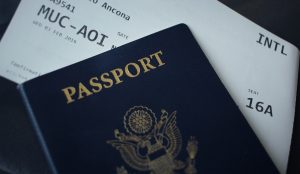Navigating Invisible Emotional Landscapes: Advanced Traveler’s Resilience
Welcome to the world of travel, where the journey is not only external, but also deeply internal. As travelers, we often embark on a quest to explore new cultures, cuisines, and landscapes, but what about the invisible landscapes within us? Our emotions, beliefs, and attitudes can greatly impact our travel experiences, especially when faced with unexpected challenges. This is where advanced traveler’s resilience comes into play – the ability to navigate these invisible emotional landscapes with ease and grace. In this article, we will delve into the concept of invisible emotional landscapes and how to develop advanced traveler’s resilience to handle them.
What are Invisible Emotional Landscapes?
Before we dive into the idea of advanced traveler’s resilience, let’s first understand what invisible emotional landscapes are. They are the layers of emotions and feelings that reside within us, often hidden from the outside world. These landscapes are shaped by our past experiences, upbringing, and personal beliefs, and can influence how we interpret and react to situations.
The Impact of Invisible Emotional Landscapes on Travel
Now, how do these invisible emotional landscapes affect our travel experiences? Let’s say you encounter a situation where your flight is delayed for several hours. Your initial reaction may be frustration, anger, or disappointment – all valid emotions. However, someone with a more anxious or pessimistic emotional landscape may react more strongly, causing them to feel overwhelmed and distressed.
Invisible emotional landscapes can also cause us to perceive situations differently, leading to misunderstandings or misinterpretations of cultural norms. For example, someone with a fear of being judged may feel self-conscious and uncomfortable in a new environment, while someone with a more open-minded emotional landscape may embrace and adapt to the differences.
Developing Advanced Traveler’s Resilience
So, how can we develop advanced traveler’s resilience to navigate these invisible emotional landscapes? Here are a few tips:
1. Practice mindfulness
Mindfulness is the practice of being present and aware of our thoughts, feelings, and surroundings. By incorporating mindfulness into our daily routine, we can become more attuned to our emotional landscapes and learn to manage them effectively. Take a few moments each day to pause, breathe, and check in with your emotions.
2. Cultivate a positive mindset
Our mindset can greatly influence how we perceive and respond to situations. By cultivating a positive mindset, we can learn to see setbacks as opportunities for growth and keep a more open and optimistic outlook. This can help us navigate through unseen emotional landscapes with resilience and adaptability.
3. Embrace challenges and be flexible
Traveling is all about embracing new experiences, and that includes challenges. Instead of seeing them as obstacles, view them as opportunities for growth and learning. And remember, sometimes things don’t go as planned, and that’s okay. Be flexible and open to change, and you’ll be better equipped to handle hidden emotional landscapes along the way.
Incorporating Advanced Traveler’s Resilience in Your Journeys
Now that you understand the concept of invisible emotional landscapes and how to develop advanced traveler’s resilience, let’s talk about how to incorporate it into your journeys:
1. Take care of yourself
Self-care is crucial for maintaining emotional well-being. When traveling, make sure to prioritize your physical and mental health. This can include getting enough rest, staying hydrated, eating well, and taking breaks when needed.
2. Connect with locals
One of the best ways to experience a new culture is by connecting with locals. This can give you a better understanding of their emotional landscapes and help you navigate any cultural differences you may encounter. Plus, it’s a great way to make new friends and create meaningful memories.
3. Reflect on your experiences
As you travel, take some time to reflect on your experiences – both positive and negative. This can help you become more self-aware and identify any patterns or triggers in your emotional landscapes. Use these reflections to continue growing and developing your advanced traveler’s resilience.
Remember, travel is not just about the places we visit, but also the journey within ourselves. By understanding and navigating our invisible emotional landscapes with advanced traveler’s resilience, we can enhance our experiences and grow as individuals. So, next time you’re on the road, don’t forget to pack this essential tool for travel.











